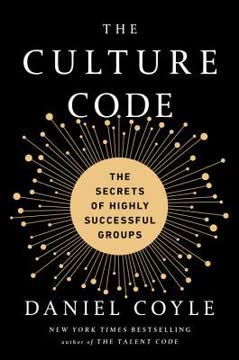重点摘要
1. DDOs将个人成长与业务成功相结合
我们不认为我们的文化是业务成功的“贡献者”;我们不认为它是一个“因素”。我们认为它是我们成功的根本原因。
整体发展方法。 有意发展型组织(DDOs)将个人成长和业务成功视为内在相互关联的。他们创造了一个环境,鼓励员工在日常工作中改进自己的弱点和局限性。这种方法不仅有利于个人,也推动了组织的绩效。
DDOs的业务优势:
- 提高员工参与度和保留率
- 增强解决问题和创新能力
- 提高适应市场变化的能力
- 更强的领导力储备和继任计划
通过投资员工的个人成长,DDOs创造了一支更有能力、更有韧性并与组织目标一致的员工队伍。这种个人和职业发展的整合导致了一个更具活力和成功的商业模式。
2. 成人心智复杂性的三个阶段塑造组织行为
心智复杂性不是关于你知道多少或你的智商有多高。它不是关于发展越来越深奥的世界理解,好像“最复杂”意味着最终能够理解物理学家的黑板上充满复杂方程式。
心智复杂性的阶段。 成人心智复杂性的三个阶段——社会化心智、自我创作心智和自我转化心智——显著影响个人在组织中的运作方式。理解这些阶段有助于DDOs定制其员工发展和组织设计的方法。
每个阶段的特征:
- 社会化心智:受外部期望和社会规范的影响
- 自我创作心智:发展内部指南针和个人意识形态
- 自我转化心智:能够反思和修正自己的意识形态
DDOs认识到处于不同阶段的员工需要不同类型的支持和挑战。通过创造一个促进这些阶段成长的环境,组织可以释放员工更大的潜力并提高整体绩效。
3. Edge, Home和Groove:DDO的三个维度
文化即战略
DDOs的核心组成部分。 DDO的三个维度——Edge, Home和Groove——共同创造了一个连贯的发展环境。Edge指的是个人的成长挑战,Home是支持性的社区,Groove则包括促进发展的实践。
维度的相互作用:
- Edge:推动个人走出舒适区
- Home:提供心理安全和支持
- Groove:建立持续学习的例行和工具
这些维度相互强化,创造了一个个人成长和组织成功交织的动态生态系统。通过有意识地设计和培育这些方面,DDOs创造了一种独特的文化,推动个人和集体的发展。
4. DDO实践促进持续学习和发展
我们变得擅长改进,因为我们擅长失败。
将发展嵌入日常工作。 DDOs实施了一系列实践,使个人成长成为日常工作的一部分。这些实践为员工提供了反思、接受反馈和尝试新行为的机会。
常见的DDO实践:
- 定期反馈会议和绩效对话
- 公开分享个人改进目标
- 结构化的反思时间和学习总结
- 角色和职责的轮换
- 同伴辅导和指导计划
通过将这些实践融入组织生活的结构中,DDOs创造了一个学习是常态、发展被视为工作自然组成部分的环境。这种方法加速了个人成长和组织适应能力。
5. 透明度和反馈在DDOs中至关重要
痛苦 + 反思 = 进步
激进的开放性。 DDOs优先考虑透明度和诚实的反馈,作为个人和组织成长的关键驱动因素。他们创建了鼓励开放沟通的系统和规范,即使这种沟通令人不适。
DDO透明度的要素:
- 记录和分享会议和对话
- 公开讨论错误和失败
- 公开解决冲突和分歧
- 分享个人发展目标和进展
这种透明度对许多人来说可能具有挑战性,但它创造了一个信任度高、学习加速的环境。通过拥抱不适和脆弱性,DDOs释放了更大的成长和创新潜力。
6. DDOs通过应对适应性挑战创造价值
通往商业成功之巅的道路仍有许多,但公司或许应该在出发前问自己,“对于我特定的业务,在这个历史时刻,我们面临的挑战主要是技术性的,还是适应性的?”
应对复杂问题。 DDOs特别适合应对适应性挑战——需要改变人们的价值观、信仰或行为的问题。通过专注于发展个人的心智复杂性,DDOs创造了一支能够驾驭不确定性和复杂性的员工队伍。
DDOs在应对适应性挑战中的优势:
- 增强的解决问题能力
- 提高的组织敏捷性和韧性
- 改善的创新和市场颠覆能力
- 更好地对齐个人和组织目标
DDOs对个人成长和集体学习的重视,使他们比传统组织更有效地应对复杂、不断变化的挑战。这种能力在当今快速变化的商业环境中变得越来越有价值。
7. 变革免疫框架揭示个人障碍
只有当你更深入地了解自己是如何——以及为什么——阻止自己取得进展时,你才能进入一个新的空间开始改变。
克服隐藏的障碍。 变革免疫(ITC)框架是DDOs中用于帮助个人识别和克服无意识障碍的强大工具。这个过程包括揭示阻碍个人成长的隐藏承诺和重大假设。
ITC过程的步骤:
- 确定改进目标
- 列出与目标相悖的行为
- 揭示隐藏的竞争承诺
- 发现重大假设
- 设计和运行挑战假设的测试
通过使用ITC框架,DDOs帮助员工发展更大的自我意识,并为个人成长制定有针对性的策略。这个过程不仅有利于个人,也有助于组织整体的变革和适应能力。
8. DDOs优先考虑集体成长而非个人绩效
在一个普通的组织中,大多数人都在做一份没有人付钱给他们的第二份工作。在大大小小的企业中;在政府机构、学校和医院中;在营利性和非营利性组织中;在世界任何国家,大多数人都在花时间和精力掩盖自己的弱点,管理他人对他们的印象,展示自己最好的方面,玩政治,隐藏自己的不足,隐藏自己的不确定性,隐藏自己的局限性。隐藏。
从个人到集体的转变。 DDOs认识到传统的绩效管理系统往往鼓励员工隐藏弱点并与同事竞争。相反,DDOs创造了一个重视集体成长而非个人绩效指标的环境。
DDO绩效文化的特征:
- 强调学习和改进而非固定目标
- 鼓励冒险和实验
- 认可支持他人发展的行为
- 基于对组织文化和成长的贡献进行评估
通过优先考虑集体成长,DDOs减少了内部竞争,创造了一个更具协作性和创新性的环境。这种方法导致了更强的整体组织绩效和适应能力。
9. 成为DDO需要重塑组织文化
这里真的没有办法做旁观者。你一进入就成为了参与者。欢迎!
变革性改变。 成为DDO涉及组织文化和实践的根本转变。它需要领导层的承诺和挑战对工作和绩效的深层假设的意愿。
成为DDO的关键步骤:
- 阐明发展文化的清晰愿景
- 围绕DDO原则对齐领导层
- 实施支持发展的新实践和系统
- 为脆弱性和学习创造心理安全
- 不断完善和调整方法
成为DDO的旅程是持续的,需要持续的努力和承诺。然而,成功完成这一转变的组织通常发现他们更有能力应对复杂的挑战并创造可持续的成功。
最后更新日期:
FAQ
What's An Everyone Culture about?
- Focus on DDOs: An Everyone Culture by Robert Kegan explores Deliberately Developmental Organizations (DDOs), which integrate employee growth with business success.
- Case Studies: It examines organizations like Next Jump, Decurion, and Bridgewater, showcasing their unique practices for fostering continuous growth.
- Interconnected Growth: The book argues that personal development and organizational success are intertwined, suggesting that focusing on human potential leads to exceptional performance.
Why should I read An Everyone Culture?
- Transformative Insights: The book offers revolutionary insights into maximizing employee potential, crucial for leaders interested in talent development.
- Practical Frameworks: It provides actionable frameworks and examples to create a growth-oriented culture in any organization.
- Modern Challenges: It addresses the need for adaptability in a changing work environment by encouraging vulnerability and continuous learning.
What are the key takeaways of An Everyone Culture?
- DDOs Defined: Deliberately Developmental Organizations intentionally create conditions for personal growth, integrating it into their operations.
- Vulnerability's Role: Vulnerability is essential for growth, serving as the foundation for creativity, belonging, and love.
- Feedback Importance: Continuous feedback is crucial, allowing individuals to confront weaknesses and learn from mistakes.
What is a Deliberately Developmental Organization (DDO)?
- DDO Definition: A DDO integrates personal development into daily operations, fostering a culture where employees grow alongside the business.
- Key Characteristics: Focus on continuous feedback, vulnerability, and viewing weaknesses as growth opportunities.
- Examples: Organizations like Next Jump, Decurion, and Bridgewater exemplify DDO principles through specific practices and cultural norms.
How do DDOs foster a culture of vulnerability?
- Safe Spaces: DDOs create environments where employees feel safe to express weaknesses without judgment, encouraging open dialogue.
- Feedback Mechanisms: Continuous feedback practices, like Bridgewater's Dot Collector, support learning and growth.
- Community Support: Emphasizing community ensures employees are supported in their vulnerabilities, making growth more manageable.
What practices do DDOs implement to support development?
- Daily Touchpoints: Regular check-ins allow employees to discuss challenges and progress, keeping personal development in focus.
- Situational Workshops: Structured environments for reflection and feedback promote self-awareness and growth.
- 10X Presentations: Employees present personal growth journeys, encouraging accountability and recognition of development efforts.
How does feedback work in a DDO?
- Continuous Culture: Feedback is a daily practice, not limited to annual reviews, encouraging confrontation of weaknesses.
- Growth Focus: Feedback is a tool for growth, helping individuals see limitations as development opportunities.
- Peer Accountability: Everyone is responsible for giving and receiving feedback, prioritizing personal and collective growth.
What role does leadership play in a DDO?
- Leaders as Coaches: Leaders actively participate in employee development, serving as coaches and mentors.
- Modeling Vulnerability: Effective leaders demonstrate vulnerability, fostering a safe environment for sharing challenges.
- Commitment to Development: Leaders must be committed to development principles, ensuring a supportive growth culture.
What is the Immunity to Change (ITC) method?
- Improvement Goals: The ITC method helps individuals identify personal growth goals and hidden commitments hindering progress.
- Four Columns: It includes improvement goals, undermining behaviors, fears and hidden commitments, and sustaining assumptions.
- Facilitating Change: By uncovering these elements, individuals can understand resistance to change and develop strategies for growth.
How do DDOs integrate personal and professional development?
- Shared Responsibility: Development is a shared responsibility, creating a culture where everyone supports each other's growth.
- Feedback Loops: Continuous feedback allows individuals to learn and adjust behaviors, fostering improvement.
- Community Support: A sense of community encourages open discussion of challenges and successes, reinforcing collective growth.
What are the five qualities of practicing in a DDO?
- Externalizing Struggles: DDO practices help articulate and examine internal struggles, making them easier to address.
- Connecting Work and Self-Improvement: Business tasks are linked with personal development, allowing growth while fulfilling job responsibilities.
- Process Over Outcomes: Feedback focuses on improving processes rather than just results, promoting a growth mindset.
What are the best quotes from An Everyone Culture and what do they mean?
- “Pain + Reflection = Progress”: Discomfort and reflection lead to personal growth and development.
- “Everyone is on a developmental path.”: All employees are capable of growth and should be supported in their development.
- “Vulnerability is the birthplace of innovation, creativity, and change.”: Safe environments for expressing vulnerabilities lead to innovation and adaptability.
评论
《人人文化》获得了褒贬不一的评价。许多人赞扬其在组织发展和职场个人成长方面的创新理念,认为“刻意发展型组织”的概念引人入胜。读者们欣赏书中提供的实际例子和案例研究。然而,有些人批评写作风格枯燥且重复,认为内容可以更简洁。书中对职场中脆弱性和透明度的关注引起了兴趣,但也有人质疑这些概念的广泛适用性。总体而言,读者们认为核心思想发人深省,但对其执行方式意见不一。
Similar Books
















